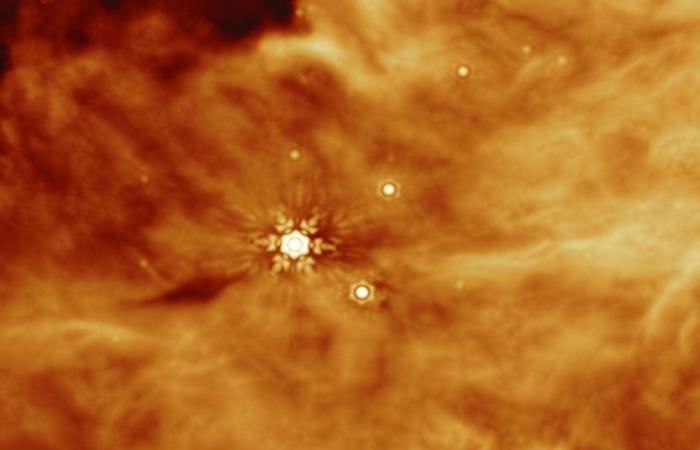Using data from the James Webb Space Telescope, an international team of astronomers detected organic molecules in two protostars (objects that can become stars if they have enough mass to do so). They range from relatively simple molecules, such as methane, to complex compounds, such as acetic acid. According to researchers, these substances contain key ingredients for worlds that could one day harbor life.
Icy compounds
The team used James Webb’s Mid-Infrared Instrument (MIRI) to identify a variety of icy compounds made from organic molecules in the protostars known as IRAS 2A and IRAS 23385. “This discovery contributes to one of the oldest questions in astrochemistry: what is the origin of complex organic molecules in space?”said team leader Will Rocha of Leiden University in the Netherlands.
The new study suggests that complex organic molecules originate from the sublimation of ice (when it goes directly from a solid to a gaseous state without becoming liquid). Therefore, The detection of these substances in ice makes astronomers hopeful about a better understanding of the origins of other, even larger, molecules in space.
Scientists are also interested in investigating the extent to which these molecules are transported to planets at much later stages of protostellar evolution. It is believed that molecules present in cold ices are easier to transport from molecular clouds to planet-forming disks than hot gaseous molecules. These icy molecules can therefore be incorporated into comets and asteroids, which in turn can collide with forming planets, providing the ingredients so that life can flourish.
“All These molecules can become part of comets and asteroids and eventually of new planetary systems when icy material is transported into the planet-forming disk as the protostellar system evolves,” said Ewine van Dishoeck of Leiden University. “We hope to follow this astrochemical trail step by step with more data from James Webb in the coming years,” he added.






